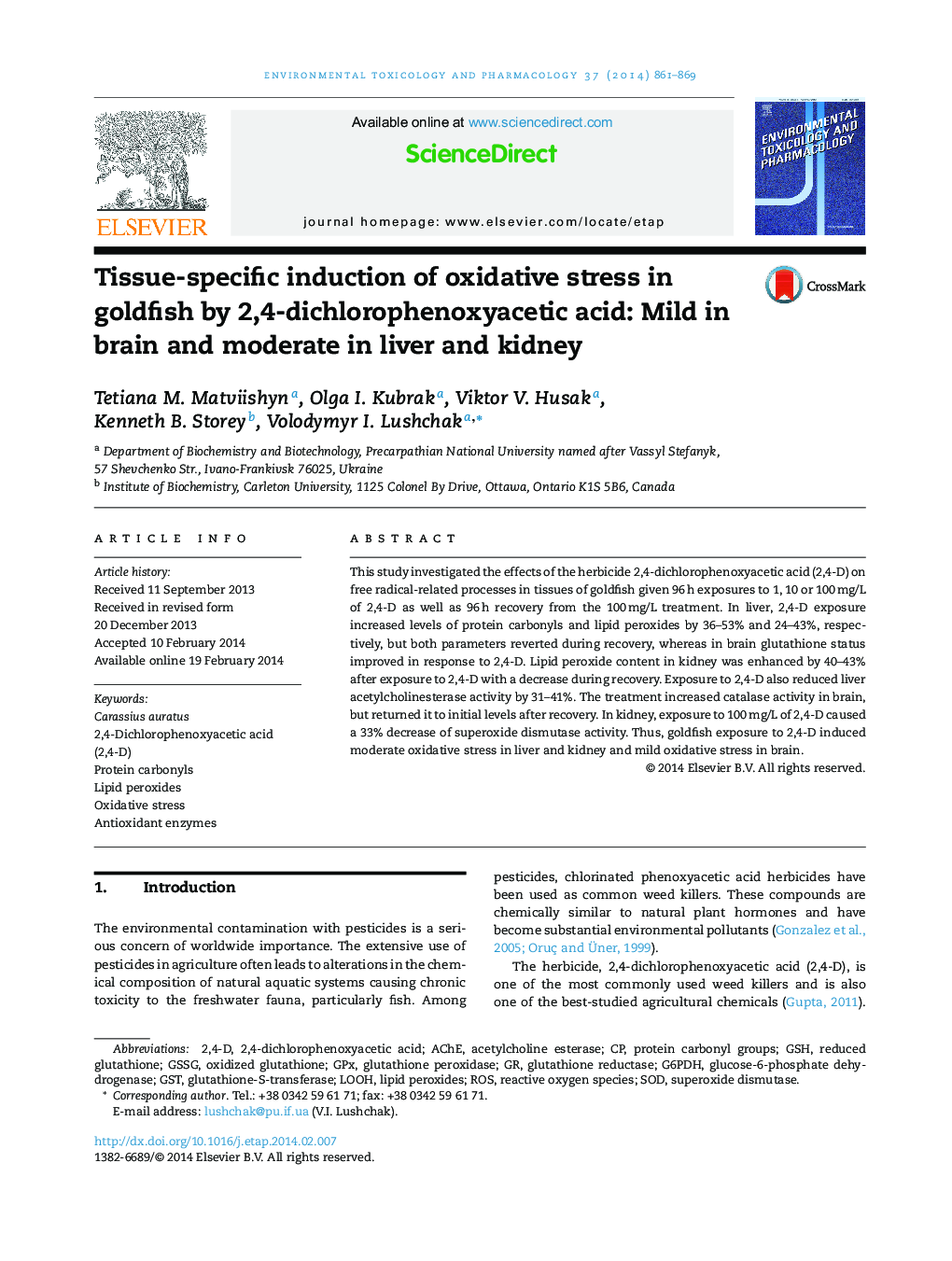| Article ID | Journal | Published Year | Pages | File Type |
|---|---|---|---|---|
| 2583024 | Environmental Toxicology and Pharmacology | 2014 | 9 Pages |
•Induction of oxidative stress may be the mechanism of toxicity of 2,4-dichlorophenoxyacetic acid (2,4-D).•Exposure to 2,4-D decreased superoxide dismutase activity in goldfish kidney.•The herbicide 2,4-D increased the activities of catalase and glucose-6-phosphate dehydrogenase in goldfish brain.•Lipid peroxide levels in goldfish liver and kidney were enhanced under 2,4-D exposure.•Levels of liver protein carbonyl groups and lipid peroxides returned to control levels during recovery process.
This study investigated the effects of the herbicide 2,4-dichlorophenoxyacetic acid (2,4-D) on free radical-related processes in tissues of goldfish given 96 h exposures to 1, 10 or 100 mg/L of 2,4-D as well as 96 h recovery from the 100 mg/L treatment. In liver, 2,4-D exposure increased levels of protein carbonyls and lipid peroxides by 36–53% and 24–43%, respectively, but both parameters reverted during recovery, whereas in brain glutathione status improved in response to 2,4-D. Lipid peroxide content in kidney was enhanced by 40–43% after exposure to 2,4-D with a decrease during recovery. Exposure to 2,4-D also reduced liver acetylcholinesterase activity by 31–41%. The treatment increased catalase activity in brain, but returned it to initial levels after recovery. In kidney, exposure to 100 mg/L of 2,4-D caused a 33% decrease of superoxide dismutase activity. Thus, goldfish exposure to 2,4-D induced moderate oxidative stress in liver and kidney and mild oxidative stress in brain.
Graphical abstractFigure optionsDownload full-size imageDownload as PowerPoint slide
